How To Photograph A Lunar Eclipse

A total lunar eclipse is a celestial event that anyone can appreciate. Amateur photographers and astrophotographers alike are preparing to photograph a lunar eclipse using a wide range of camera equipment.
The best part? You don’t need expensive gear or special filters to capture a great shot. You can get impressive results with the right camera settings—even on a smartphone.
I recommend practicing your moon photography beforehand to make the most of the eclipse. This way, you won’t waste valuable time adjusting your settings during the event.
Since I started astrophotography in 2010, I’ve photographed several total lunar eclipses. I’ll share everything I know in this article, from essential camera settings to recommended equipment. Let’s get into it.
Taking a great picture of the blood moon is all about preparation and timing.
Essential Lunar Eclipse Photography Tips:
To increase your chances of capturing an incredible shot of the total lunar eclipse, use a DSLR camera. This will give you the advanced controls needed to properly expose the image throughout the event.
- Use a DSLR or Mirrorless camera for the highest quality lunar eclipse photo.
- Take all of your images in RAW image format to properly edit the photos you take.
- Use a tracking equatorial mount when shooting at high magnification (star trackers work great).
- If using a smartphone camera, use manual or ‘pro’ mode for full control over settings like ISO, aperture, and exposure.
An entry-level DSLR camera (the Canon EOS Rebel T7 is great) can capture incredible photos of the lunar eclipse. The image above was shot using the standard kit lens (18-55mm F/4.5-5.6) that came included with the camera.
In the example above, you can see how much of a difference just changing your camera’s ISO setting makes. Both images were taken with a Canon EOS Mirrorless camera and a Canon EF 400mm F/5.6 lens and were 1 second in exposure length.
When is the Next Lunar Eclipse
The next total lunar eclipse is on March 13-14, 2025. The entire eclipse is visible from start to finish from North America.
From my location (Toronto, Ontario), the total lunar eclipse will begin at 11:57 pm on March 13th and end at 6:00 am on March 14th.
For detailed information about when the lunar eclipse will start from your location, visit timeanddate.com.
The next total lunar eclipse is on March 13-14 and will be visible from North America.
Prepare to Photograph the Lunar Eclipse
For a celestial event like a lunar eclipse, preparation is key. Knowing exactly when and where the eclipse will occur from your location will help you prepare.
Planning ahead allows you to choose the perfect spot, ideally a dark sky location with minimal light pollution and a clear, unobstructed view of the horizon. Be sure to check the weather forecast in advance, as clear skies are crucial for capturing every stage of the eclipse.
If tall trees obstruct your backyard, you may want to travel to a location with a low western horizon for the best view. Additionally, make sure the eclipse is visible from your region.
Lunar eclipses can occur at different times across the globe, and there are instances when the event might only be visible on the other side of the Earth.
Upcoming Lunar Eclipses
The next total lunar eclipse will take place on March 14, 2025.
For more information on subsequent lunar eclipses, see the table below.
| Date | Eclipse Type | Visible From |
|---|---|---|
| March 13-14, 2025 | Total | Europe, Much of Asia, Much of Australia, Much of Africa, Americas Pacific, Atlantic, Arctic, Antarctica. |
| September 7-8, 2025 | Total | Europe, Asia, Australia, Africa, West in North America, East in South America, Pacific, Atlantic, Indian Ocean, Arctic, Antarctica. |
| March 2-3, 2026 | Total | East in Europe, Asia, Australia, Americas, Pacific, Atlantic, Indian Ocean, Arctic, Antarctica. |
| August 27-28, 2026 | Partial | Europe, West in Asia, Africa, Americas, Pacific, Atlantic, Indian Ocean, Antarctica. |
| February 20-21, 2027 | Preumbral | Europe, Asia, North/West Australia, Africa, Americas, Pacific, Atlantic, Indian Ocean, Arctic, Antarctica. |
| August 16-17, 2027 | Preumbral | West in Europe, North in Asia, Much of Australia, North/West Africa, Americas, Pacific, Atlantic, Antarctica. |
| January 11-12, 2028 | Partial | Europe, North/West Asia, Africa, Americas, Pacific, Atlantic, Indian Ocean, Arctic. |
| July 6-7, 2028 | Partial | Europe, Asia, Australia, Africa, South/East South America, Pacific, Atlantic, Indian Ocean, Antarctica. |
| December 31 - January 1, 2028 | Total | Europe, West in Asia, Africa, Americas, Pacific, Atlantic, Indian Ocean, Antarctica. |
Types of Lunar Eclipses
As you know, the Earth orbits the Sun, and the Moon orbits the Earth. During a total lunar eclipse, the Earth is sitting directly between the Sun and the Moon.
Although the Moon is covered in Earth’s shadow, some sunlight still reaches the Moon. When the Moon enters the central umbral shadow of the Earth, it turns dim, red.
This distinctive ‘blood’ color is from the sunlight passing through Earth’s atmosphere to light up the disk of the moon.
There are 3 primary types of lunar eclipses:
- Penumbral lunar eclipse: the moon enters Earth’s outer shadow (penumbra or umbral shadow), causing a subtle dimming that is often difficult to notice.
- Partial lunar eclipse: the Earth’s inner shadow (umbra) begins to cover the moon, creating a visible dark shadow across its surface.
- Total lunar eclipse: the moon is fully immersed in the umbra, taking on a reddish hue due to sunlight filtering through Earth’s atmosphere, also known as a blood moon.
The 3 primary types of lunar eclipses. Penumbral, Partial, and Total. Fred Espenak.
Unlike a solar eclipse, observing a total lunar eclipse is completely safe to do with the naked eye. This natural phenomenon can be enjoyed without the aid of any optical instruments, although binoculars can really help to get an up-close view.
Stages of a Total Lunar Eclipse
There are seven stages of a total lunar eclipse. You can capture a single phase or try to capture each one to create a composite photo showing the transition of the Moon. A time-lapse video is another excellent way to capture each stage of the eclipse.
A lunar eclipse sequence. Rod Pommier, Portland, OR (2014). Celestron Compustar C14.
The maximum, or total, eclipse stage is the moment when most photographers want a great shot. This is when the moon is completely covered in the Earth’s shadow and turns “blood” red.
When this happens, the surrounding night sky will become much darker, and the stars and constellations surrounding the moon begin to appear as they would on a moonless night.
It is an unforgettable experience for those lucky enough to witness this moment and more impressive than the partial phases.
Capturing a scene like this requires careful planning and execution. You will also need to make the necessary adjustments to your camera settings through each stage.
Stages of the Total Lunar Eclipse:
- Penumbral Eclipse begins
- Partial Eclipse begins
- Full Eclipse begins
- Maximum Eclipse
- Full Eclipse ends
- Partial Eclipse ends
- Penumbral Eclipse ends
How to Photograph a Lunar Eclipse
Over the years, I have photographed a number of total lunar eclipses using a variety of different cameras (smartphone, DSLR, dedicated astronomy camera).
The key to a great image isn’t the specific camera you use; it’s about the magnification and correct settings.
Without enough ‘reach,’ the moon will appear small and lack the details you are hoping to capture. I recommend using at least 300mm of focal length or more to capture a lunar eclipse.
A handy reference showing how big the moon will appear at various focal lengths.
This means using a long telephoto camera lens or an astronomical telescope is best. Then, it’s all about choosing the best camera settings.
A lunar eclipse is a challenging subject in terms of lighting conditions. The moon will change in brightness as it goes through the different stages of the eclipse, and you must adjust your camera settings accordingly.
Equipment for Shooting a Lunar Eclipse
Depending on the equipment you own, here are 6 different ways to photograph the lunar eclipse:
- Smartphone/point-and-shoot camera through a telescope eyepiece
- DSLR camera and wide-angle lens on a stationary tripod
- DSLR camera and telephoto lens on a tracking mount
- DSLR camera attached to a telescope on a tracking mount
- Dedicated astronomy camera attached to the telescope and tracking mount
- Smart Telescope timelapse or image
A DSLR (or Mirrorless) camera, a telephoto lens, and a star tracker (Star Adventurer GTI shown) is an ideal setup to photograph a total lunar eclipse. Once aligned, the star tracker ‘freezes’ the moon in place for more options in terms of camera settings.
Phone/Camera Through Telescope Eyepiece
This type of astrophotography is often referred to as eyepiece projection. To do this, you’ll position your smartphone (or digital camera) on top of the eyepiece of the telescope.
Although you’ll have much less control over exposure and record less detail, this technique can be used with a non-tracking telescope like a Dobsonian.
I recommend capturing the lunar eclipse during its maximum phase (totality) if you’re using this method. You likely won’t be able to capture a well-exposed image using the camera’s auto-exposure mode.
An eyepiece smartphone adapter will help to steady your shot. I have had great results using the Celestron NexYZ smartphone adapter when photographing the moon.
It clamps onto the eyepiece itself and is much more secure than models I have used in the past.
Use a smartphone adapter to line up your camera lens and secure your phone.
Smartphone Camera Settings
To fully control the exposure, it is best to use manual mode (often called ‘pro’ mode) rather than the standard auto setting. Because the Moon is so bright, your camera will have trouble finding the correct exposure to show the surface details.
To fix this, adjust the basic camera settings like exposure length, ISO, and f-stop.
A shorter exposure time of 1/500′ and a moderate ISO setting of 400 is a good place to start (see below). If the moon looks too bright or too dim using these settings, make small adjustments to the exposure time until it is well exposed to reveal the moon’s surface.
Use manual focus mode to ensure that the moon is in critical focus rather than relying on the autofocus capabilities of your phone camera. This can be tricky to get right, but keeping the camera steady via the smartphone adapter will make this a lot easier.
Capturing the lunar eclipse using the ‘pro’ mode on my smartphone.
DSLR Camera and Lens
Even if you don’t own a telescope, you can still take a great picture of the lunar eclipse. A zoom lens (or long telephoto) is best, but shorter focal length lenses can capture the landscape and mood of the moment.
Make sure to use the ‘Manual’ mode on your DSLR camera for full control over the camera settings. The ‘Auto’ mode and flash won’t work on a photo of the total lunar eclipse.
A tripod and remote shutter release cable are essential accessories for capturing a crisp shot. A ball head will help you point your camera and lens at the perfect angle.
Using my Mirrorless Canon EOS R6 camera with a Canon RF 70-200 F/2.8 zoom lens to photograph the moon.
Wide-angle nightscape images, which include a large portion of the night sky and an eclipsed moon, can be taken using a DSLR and tripod. For a 30-second exposure, a tracking mount is not necessary.
At a focal length of 18mm or wider, star trails will begin to show after about 20-25 seconds, so keep that in mind. Adjusting the exposure length and ISO is essential to expose the moon properly.
A total lunar eclipse captured using a standard kit lens (Canon 18-55mm F/4.5/5.6).
To properly capture a starry sky and a detailed moon, you’ll likely need to take exposures of varying lengths and blend them into a composite image. This is because the moon is much brighter (even while eclipsed) than the surrounding starry sky.
As a starting point, try using and ISO setting of 800 or above. If the eclipsed moon appears as a featureless ball of light, you’ll need to capture a separate (shorter) exposure of the moon to capture its features properly.
Use a Star Tracker
At longer focal lengths (300mm and above), you’ll need a fast shutter speed to keep the moon sharp, as the Earth’s rotation makes the moon a moving target.
A star tracker like the Sky-Watcher Star Adventurer is a great choice, and will allow you to take longer exposures by following Earth’s rotation.
While the moon (during each phase) is rather bright, a slightly longer exposure provides more options when it comes to creating a clean image.
Because a star tracker keeps the moon centered and still, you can now experiment with a lower ISO setting, and longer exposure length.
DSLR and Telescope
A DSLR camera (or mirrorless camera) and telescope can help you take a detailed image of the eclipsed moon. You can directly attach a DSLR camera using a T-Ring adapter to utilize the telescope’s native focal length.
A small refractor telescope will have an adequate amount of focal length (magnification), offer precision focus, and have a stable base to attach to an equatorial telescope mount.
Using a telescope to capture the total lunar eclipse.
With the camera connected to the telescope, experiment with different exposures and ISO settings in manual mode, using live-view mode on the LCD screen to make sure you have not under/overexposed the image.
No filters are necessary to record the lunar eclipse with a DSLR camera. A stock DSLR camera is best, as the additional wavelengths available with a modified camera are not used in moon photography.
With an accurately polar-aligned tracking mount, exposures of 2-5 seconds will work great. Without a tracking equatorial mount, a 2.5-second exposure is impossible.
Even 1-second of movement at this focal length will record a blurry image if the telescope or lens is not moving at the same speed as the moon.
I enjoy the freedom and simplicity of a DSLR or mirrorless camera. Camera settings such as ISO, exposure, and white balance can easily be changed on the fly as the eclipse is taking place.
A photo of the “Super Blood Moon” eclipse I captured from my backyard in 2022.
Smart Telescope
A smart telescope is a great way to photograph a total lunar eclipse. These devices make it easy to find and focus on the moon by walking you through the process via a mobile app.
The Seestar S50 is an excellent choice for moon photography. The Seestar can automatically find the moon in the sky and will autofocus the telescope on the lunar surface.
Below, you can see an example of how big the moon will appear through the Seestar S50 and the Dwarf 3 smart telescope. While the field of view is slightly better in the S50, either smart telescope will work great for a lunar eclipse.
Size of the moon comparison between the Dwarf 3 and Seestar S50.
Without A Tracking Mount
Since the moon is very bright, it is possible to take a fast exposure (1/500″ or faster) of the moon without tracking. You will still want to use an optical instrument such as a telescope or long lens, and without tracking, it will be tricky.
Even at 10X magnification, the moon will slowly move across the eyepiece as you look at it through the telescope. This is a subtle reminder that the earth is always spinning, and it is why astrophotography is so challenging overall.
Thankfully, unlike dim, deep-sky objects like nebulae and galaxies in the night sky, solar system subjects like the moon are incredibly bright. You can take an ultra-fast exposure of the moon through a telescope that is still sharp without tracking.
Many visual observers enjoy the affordability and performance of a Dobsonian Telescope like the one shown below. They are a fantastic choice for anyone interested in astronomy, and why I consider them to be the best telescope for beginners.
Using the eyepiece projection method, it is possible to produce a comparable close-up image using a digital camera or smartphone through the eyepiece of a non-tracking telescope, such as a Dobsonian.
For the best results, use a smartphone adapter that allows you to secure your phone to the telescope.
Camera Settings
Because a lunar eclipse is an evolving scene with varying light levels, you’ll need to adjust your camera settings throughout the phases of the eclipse.
Remember that your pictures will have a much better chance of being sharp with a crisp focus if you use a tripod, a remote shutter cable, and, better yet, a star tracker.
Here are some general camera settings you can try:
1. Partial Eclipse / Bright Moon (Before Totality)
The shortest exposures will only be helpful during the partial stages of the lunar eclipse, as the lunar eclipse is beginning and ending. This is a challenging phase of the event to capture in a single shot, as the shadows and highlights of the image are from one end of the spectrum to the other.
- ISO: 100-400
- Shutter Speed: 1/125s – 1/500s
- Aperture: f/6.3 – f/11
- White Balance: Daylight or set manually
2. Total Eclipse / Blood Moon (During Totality)
When the moon enters totality, you will need to bump up your ISO and/or your exposure length to reveal the disk of the moon as it becomes dimmer. Use a timer or external remote shutter release cable to avoid camera shake if possible.
Ideally, you’ll keep the ISO as low as possible for the least amount of noise. With an accurately polar-aligned tracking mount, exposures of 2-5 seconds will work great.
The benefit of shooting a long exposure during the maximum eclipse (totality) is that you also record the starry sky behind the moon. To do this in a single exposure on a normal full moon is not possible as the dynamic range is too wide.
- ISO: 800-3200 (sometimes higher if it’s very dark)
- Shutter Speed: 0.5s – 4s (longer exposures capture more detail)
- Aperture: f/4 – f/6.3 (wide open to let in more light)
- White Balance: Adjust for a reddish hue or shoot in RAW for flexibility
Digital cameras make it very easy to test various camera settings. You can experiment with bracketing exposures to create an HDR composite.
- Composite Image: requires you to change your camera settings during each phase.
- High Dynamic Range: to properly expose the total eclipse phase with a starry background sky, you’ll need to adjust your settings to capture both separately.
Post-Processing Your Photos
Finally, post-processing is key. As long as you have taken your images in RAW image format, you will have plenty of control over how your final image looks.
Adobe Photoshop and Adobe Camera Raw are excellent tools for adjusting highlights and color balance, allowing you to bring out the best in your lunar eclipse photos.
Some of the key processing steps for a great lunar eclipse photo are noise reduction, sharpening, and saturation.
Here are some powerful image processing steps to apply to your final image of the total lunar eclipse (totality) in Adobe Lightroom or Photoshop:
Adobe Camera Raw Adjustments
- In the Light menu, bring down the highlights and push the shadows up until you achieve a balanced yet natural look.
- In the Color menu, gently push the saturation of the image up. Be careful not to overdo it.
- In the Effects menu, adjust the Clarity and Dehaze sliders to reveal more details on the lunar surface.
- In the Detail menu, adjust the Noise Reduction slider to reduce noise and push the Sharpening slider up.
Adobe Camera Raw offers powerful tools to edit your photos of the Total Lunar Eclipse.
Conclusion
Capturing a total lunar eclipse is all about preparation and timing. It’s about practicing your technique on the full moon well in advance of the event.
When you are comfortable adjusting camera settings on the fly, photographing a lunar eclipse isn’t so difficult. The changing lighting levels throughout the event mean you must be quick on your feet.
I am confident that with the tips shared in this article, you will be well prepared to capture a stunning photo of the blood moon and all of its phases. Good luck and clear skies!
Trevor Jones is an astrophotographer and a valued member of the RASC. His passion is inspiring others to start their astrophotography journey on YouTube so they can appreciate the night sky as much as he does. His images have been featured in astronomy books & online publications, including the NASA Astronomy Picture of the Day (APOD).

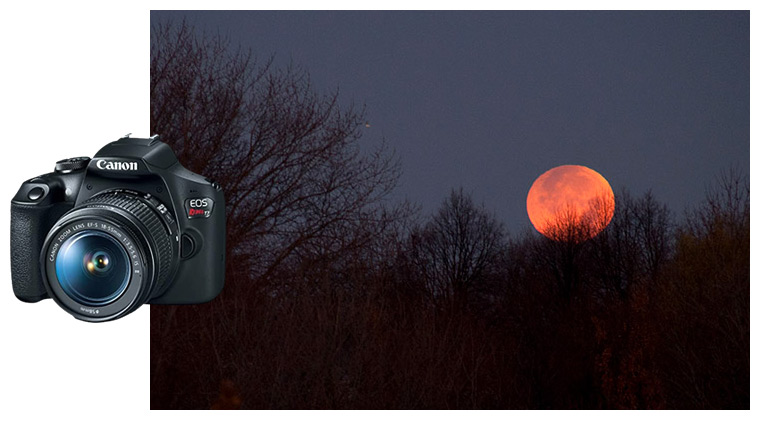



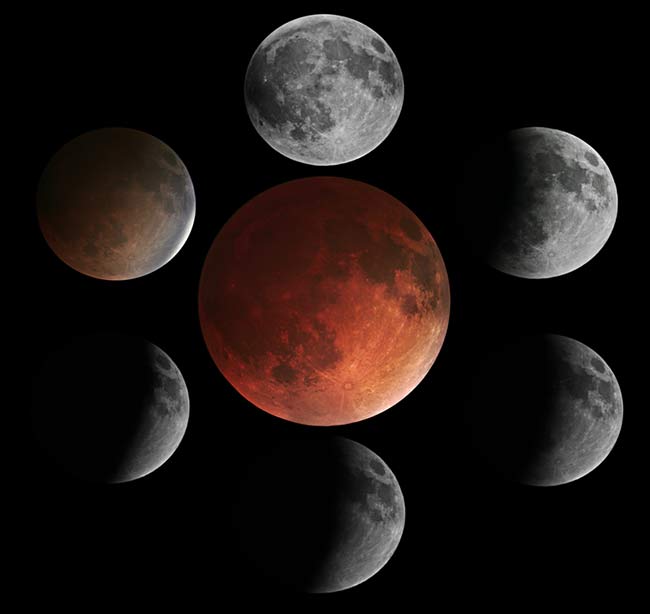






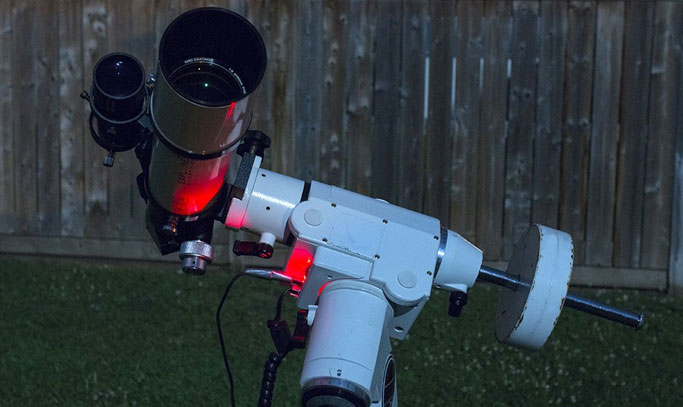


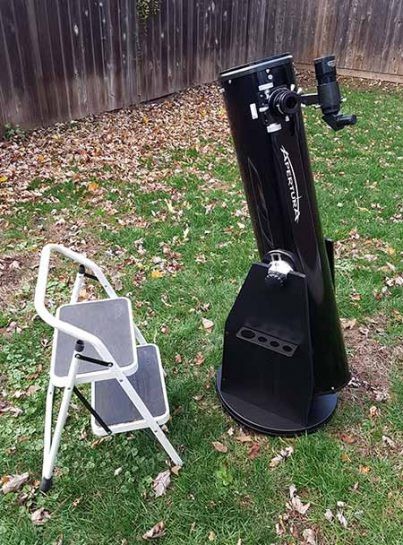
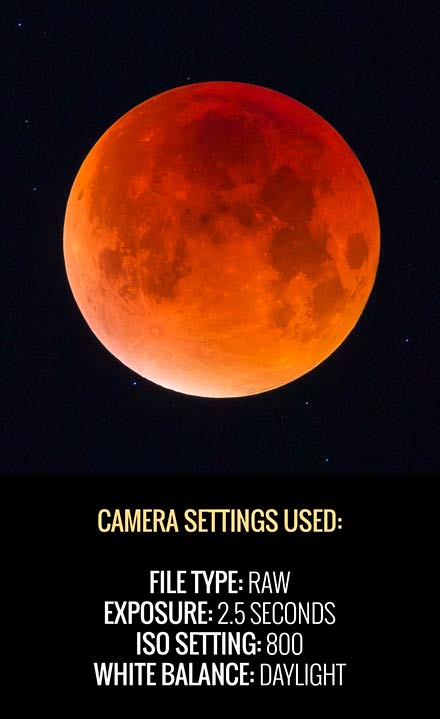


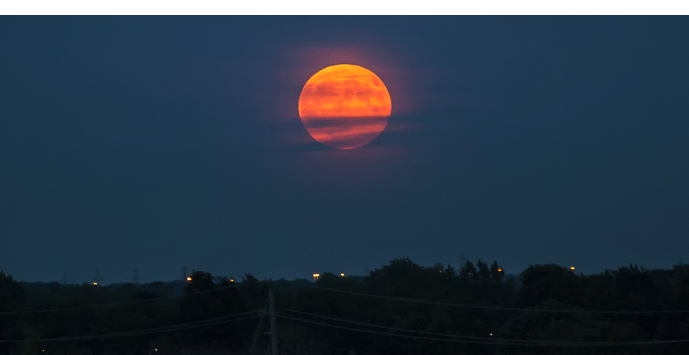
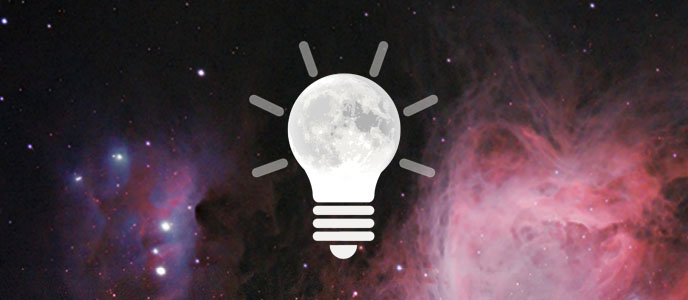
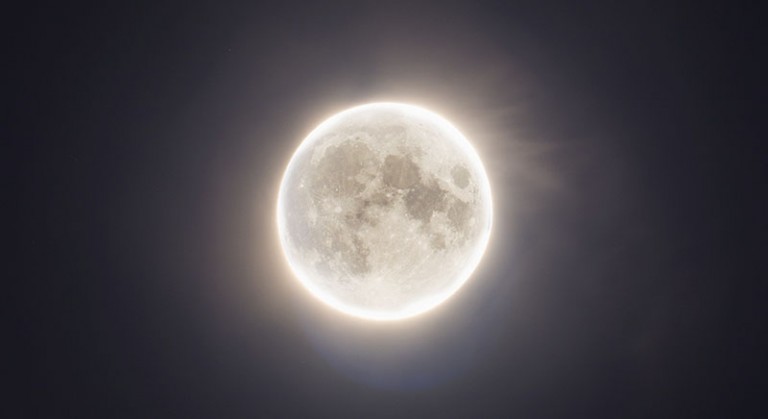

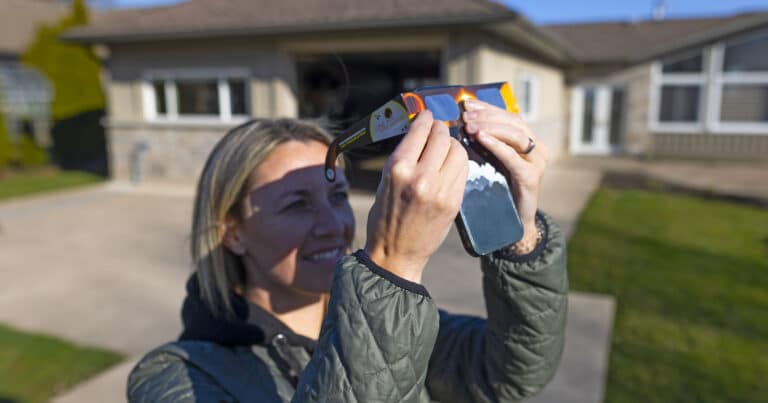
Good job. Thank you
I have seen so many of your videos that I can hear you in this article. Thank you very much for sharing these tips! I intend to get pictures of the total lunar eclipse on March 13-14, 2025, and this has been a helpful article. Clear Skies!